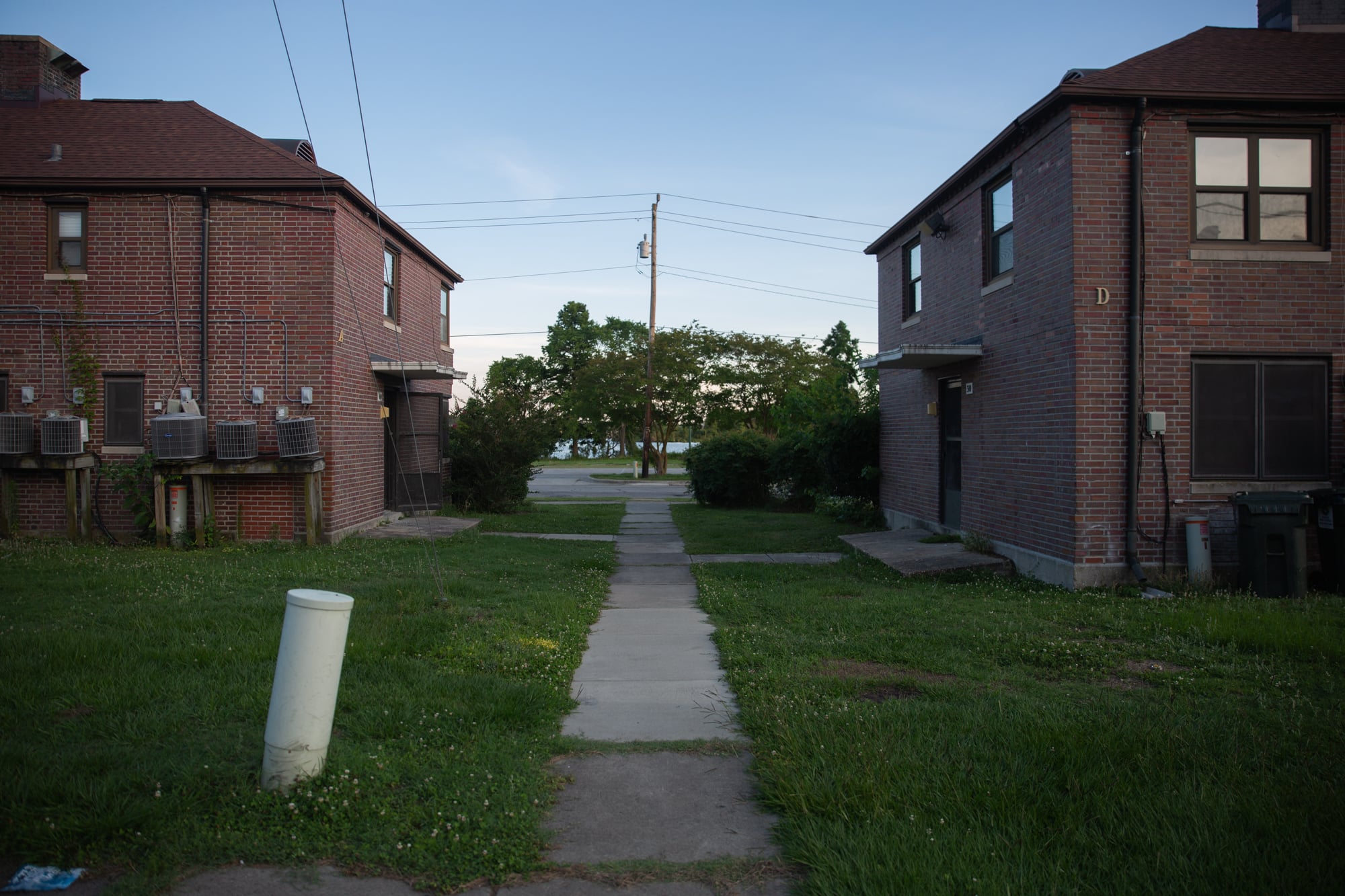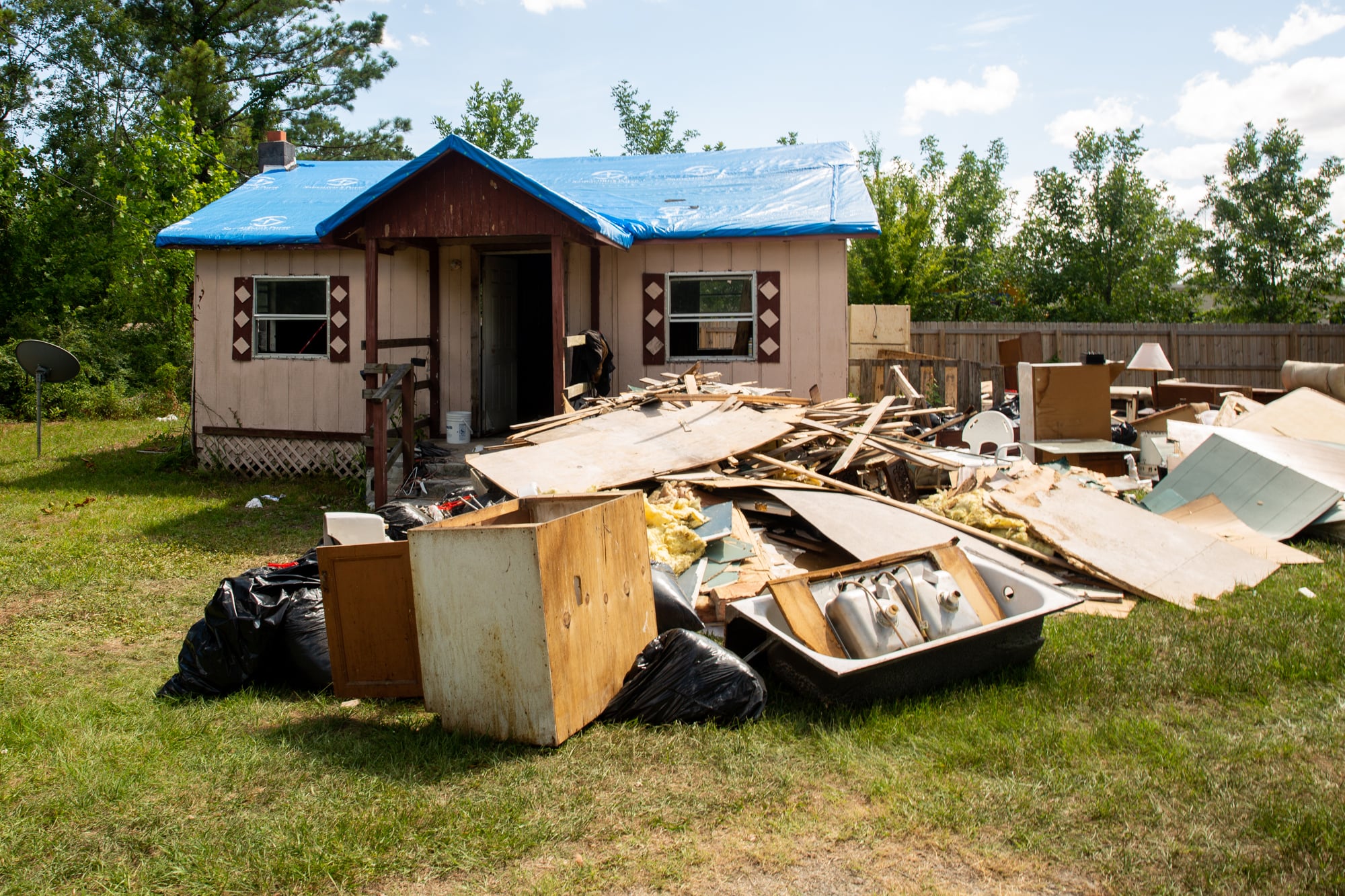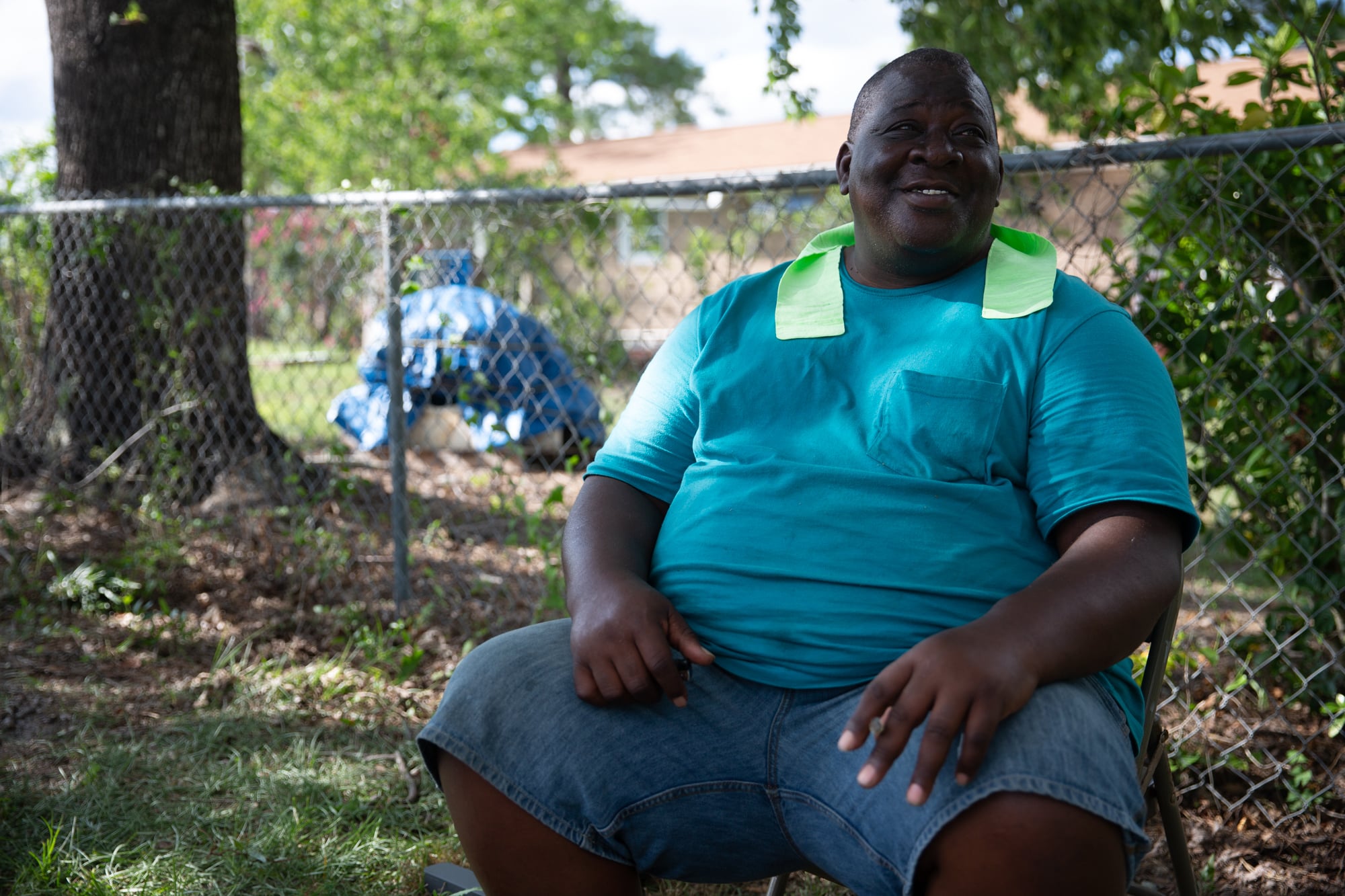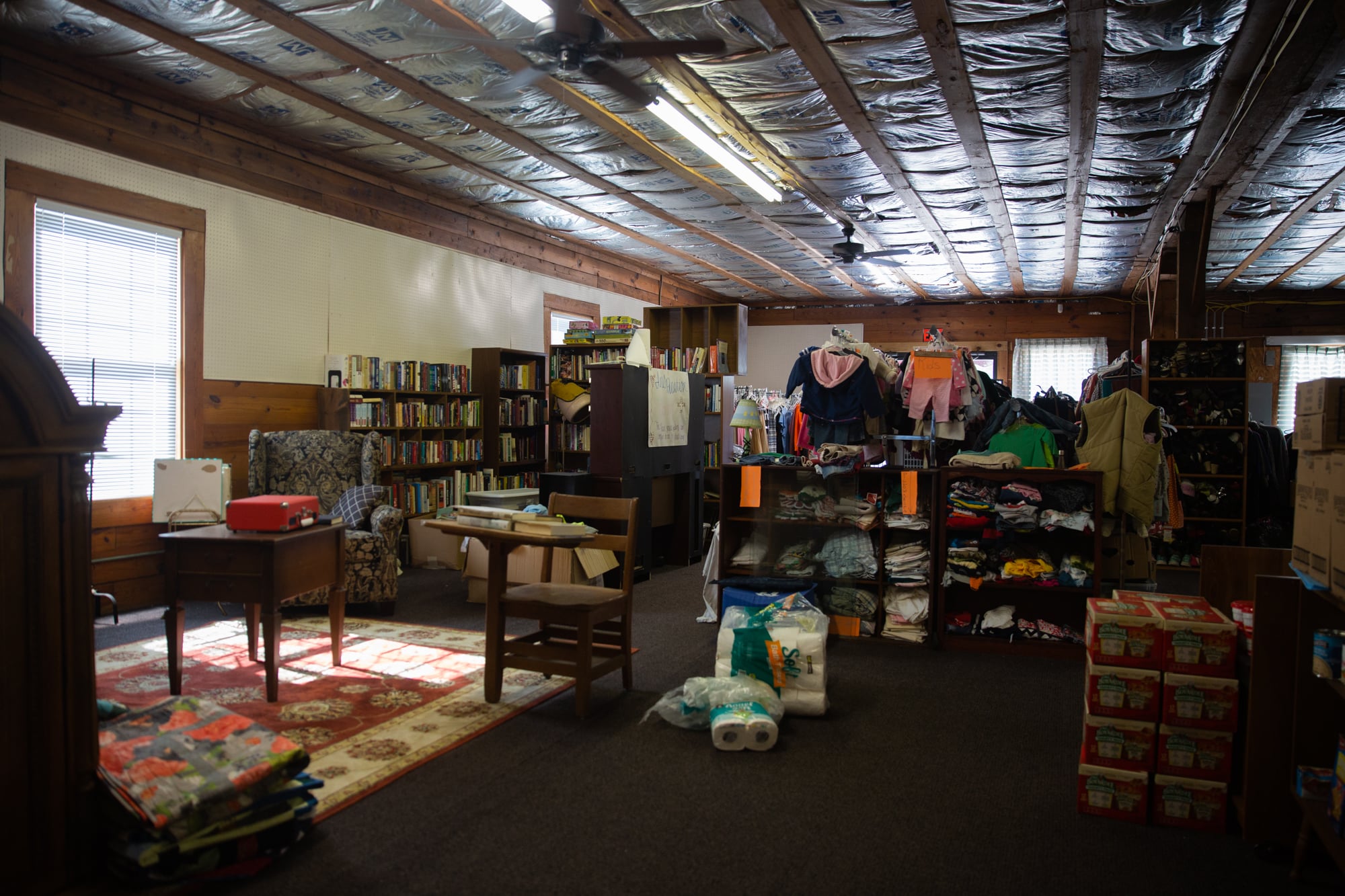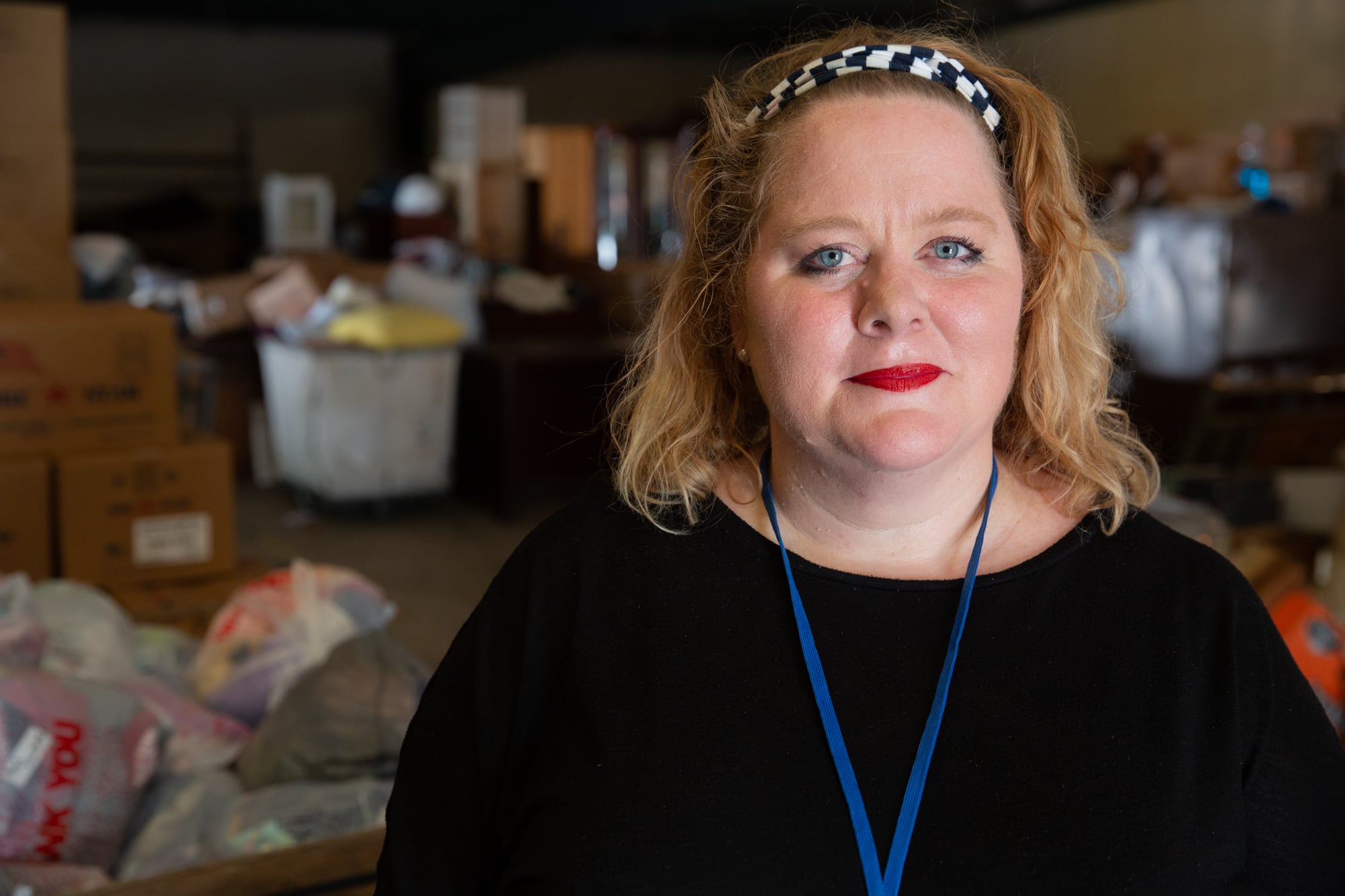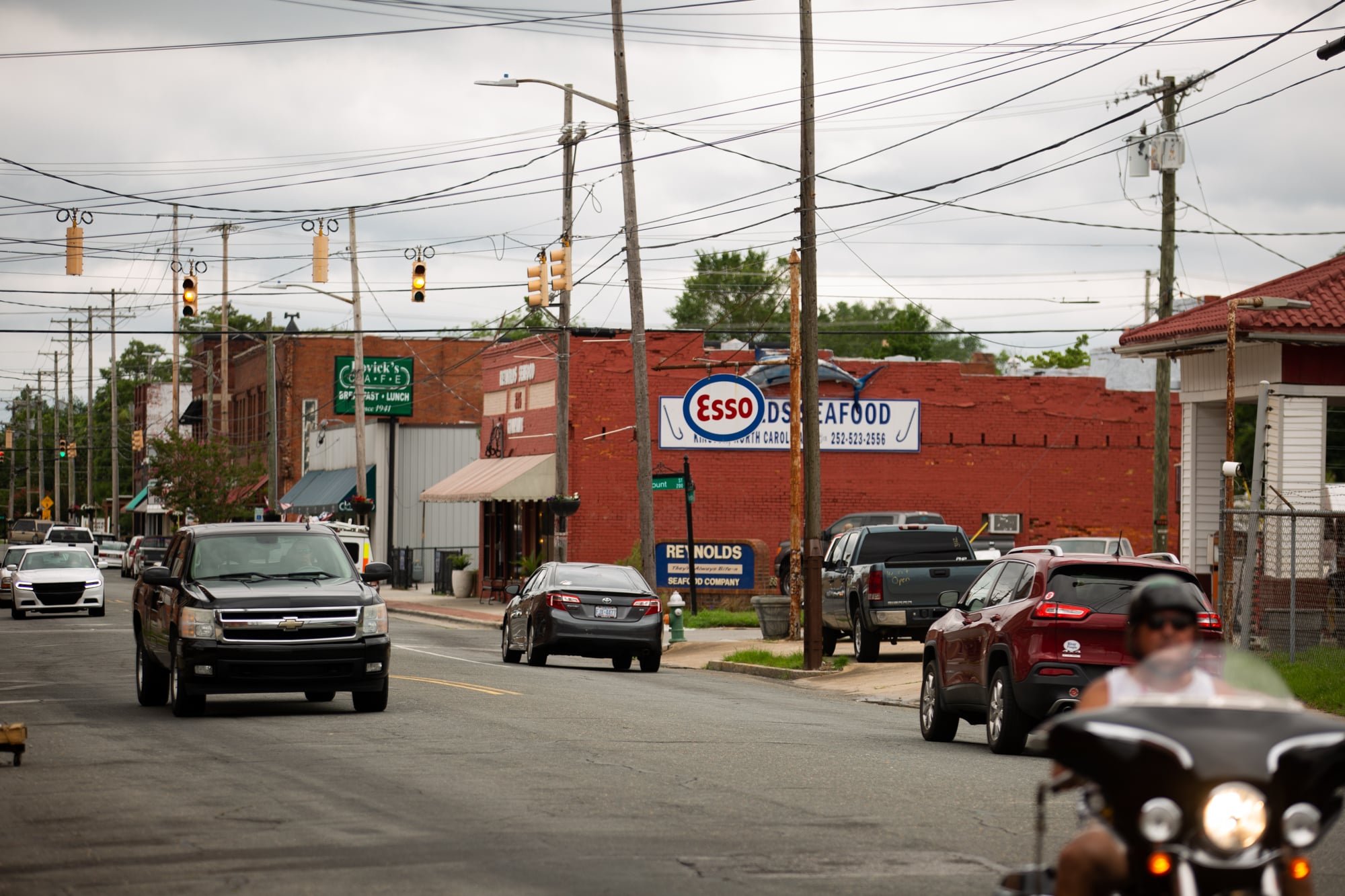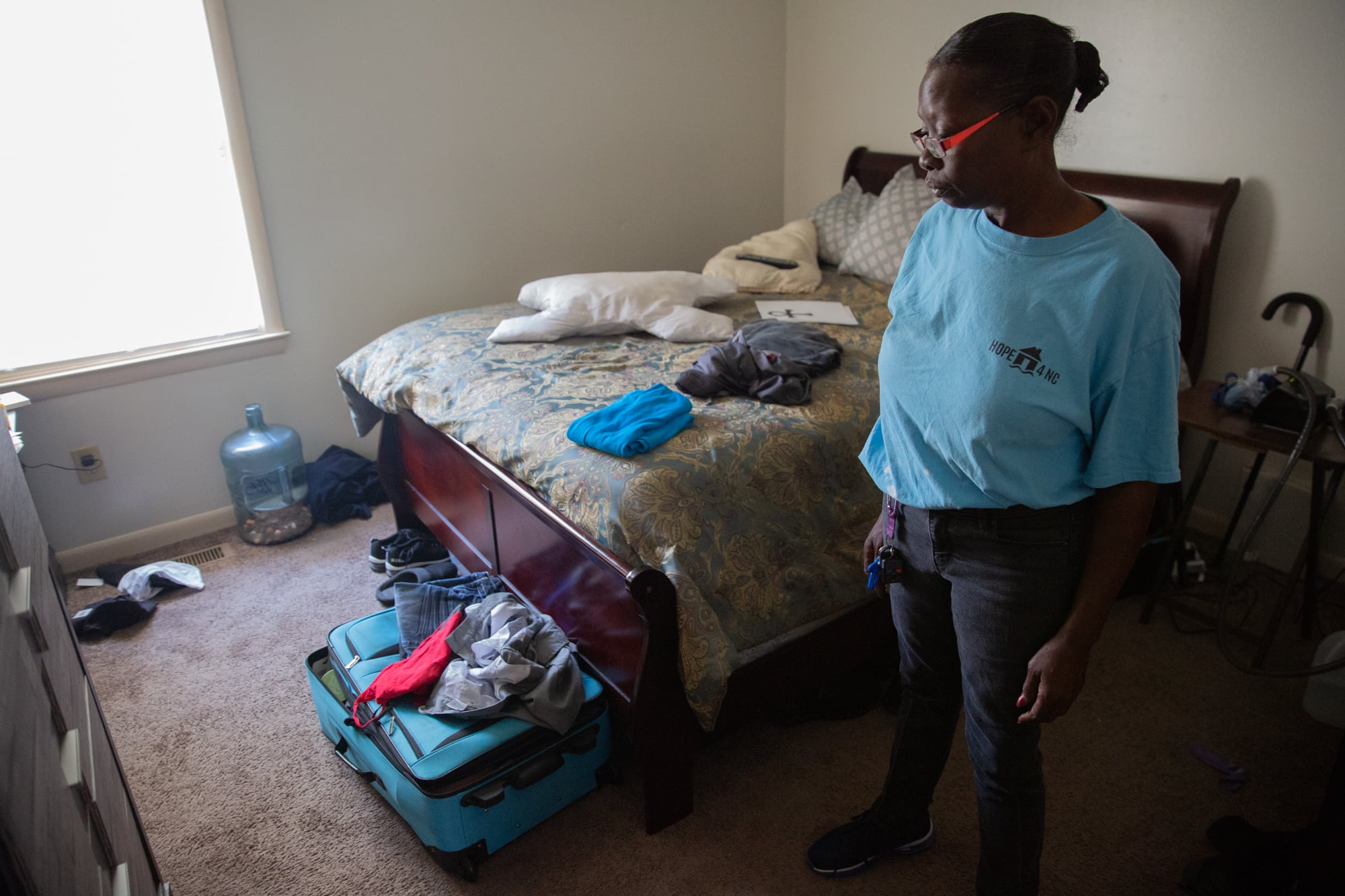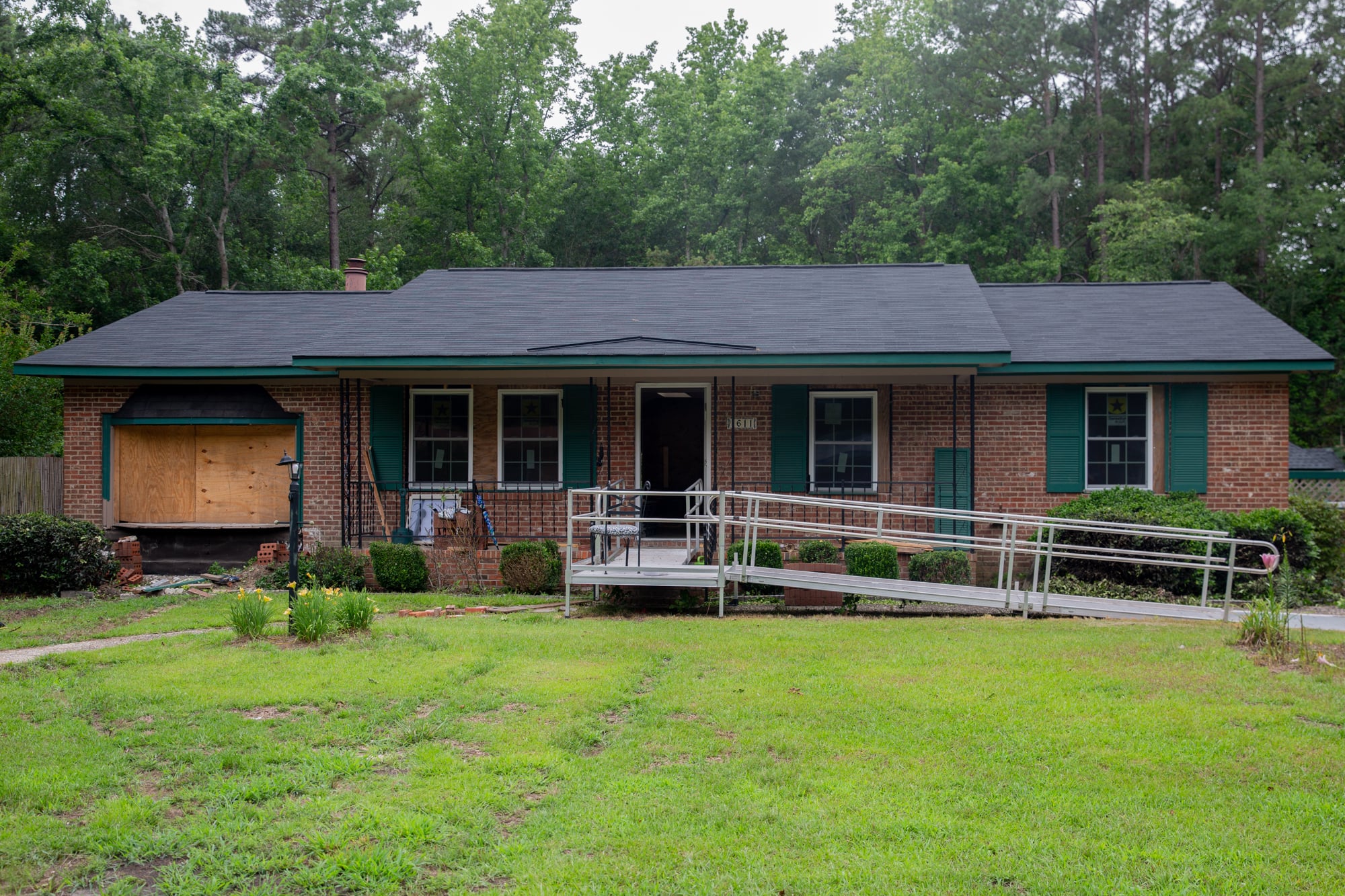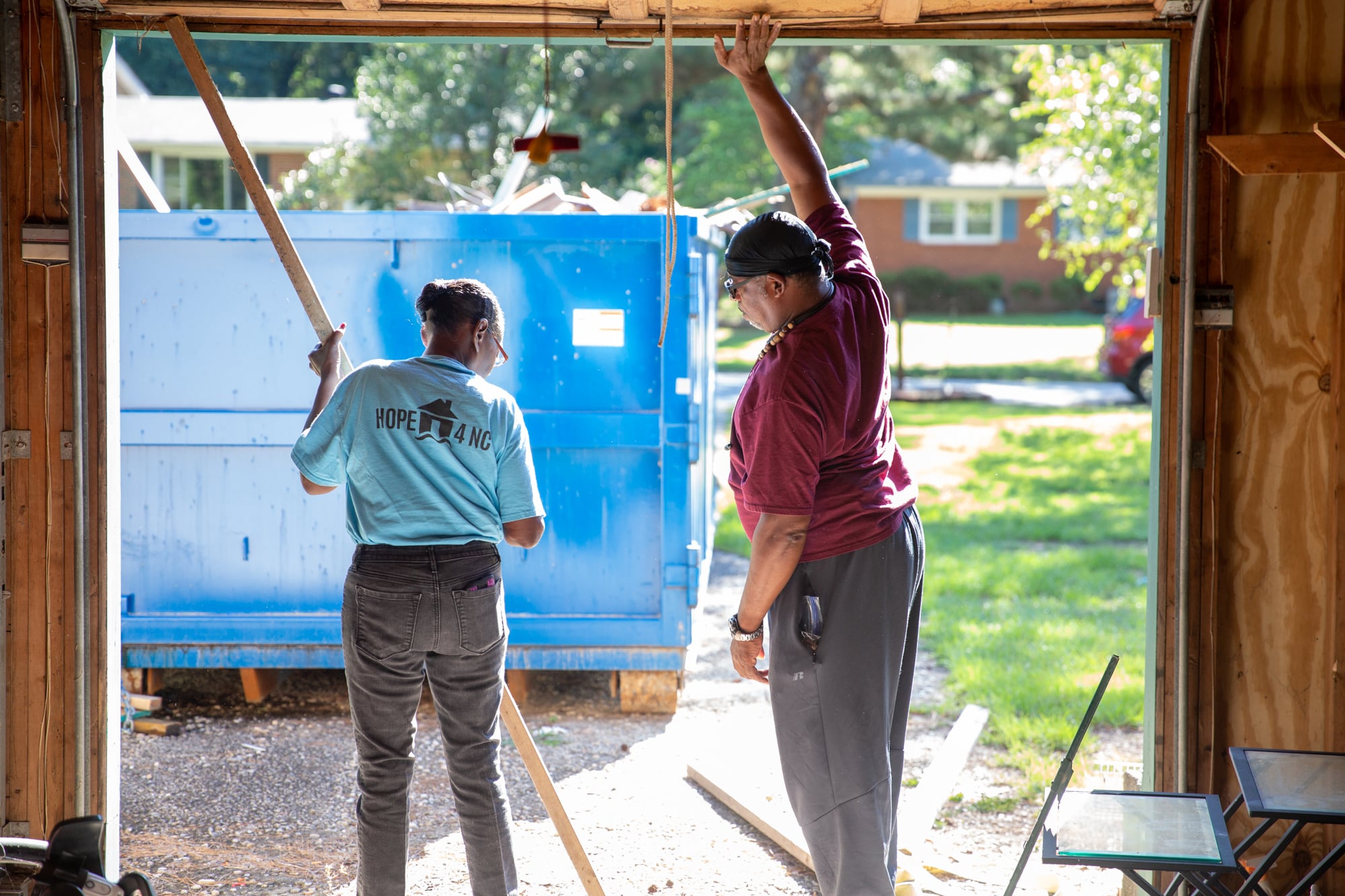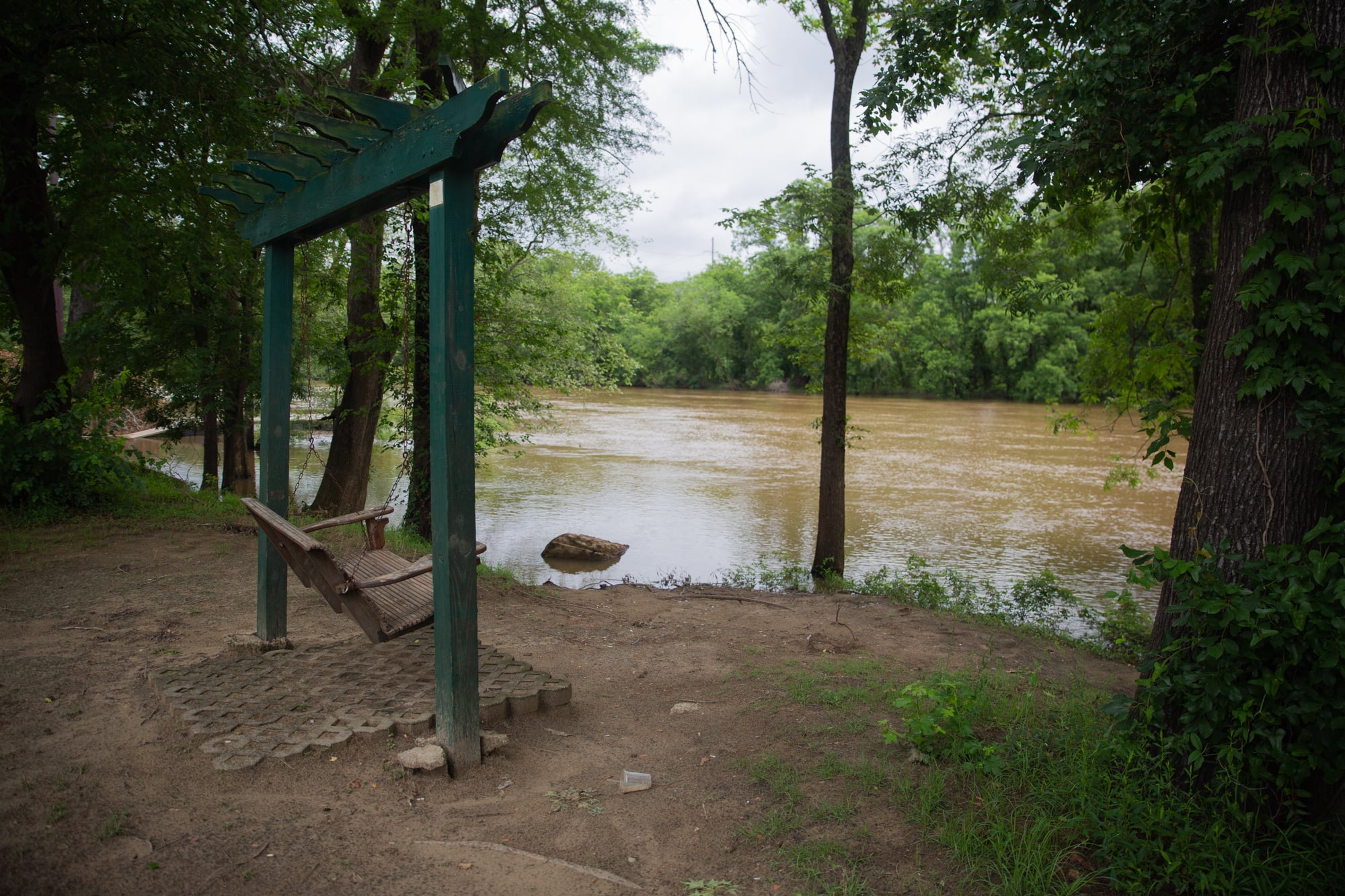‘What are we going to walk away to?’ Socioeconomic conditions determine who best recovers from disasters
KINSTON, N.C. – On the southeastern edge of town, near the banks of the Neuse River, are wooded acres of unkempt shrubbery, wildlife and dirt paths pocked with mud holes. A sign reads, “NOTICE Restricted Access Area.”
This is where Lincoln City used to stand. The low-income neighborhood was settled almost exclusively by African-Americans and segregated from the wealthier side of Kinston. There were businesses, churches, and houses.
Then Hurricane Floyd struck in 1999. The storm pushed nearly 28 feet of water from the Neuse River and washed away Lincoln City. The Federal Emergency Management Agency bought the land in April 2000. No one has lived there since.
“You can still ride back and see roads and streets where houses, nice houses, once stood and businesses once stood,” said Chris Suggs, CEO and founder of the non-profit organization Kinston Teens. “It’s really disheartening to know that storm really washed away something that was really good for us.”
Kinston is on the coastal plains in eastern North Carolina, home to some of the most economically disadvantaged people in the state. Out of the 41 counties that comprise this region, 28 are among the most economically distressed, according to the North Carolina Department of Commerce.
“Poverty is such a nagging issue in eastern North Carolina,” said Adrian King, executive director of Kinston Area Recovery Efforts. “There’s no easy remedies for it because it takes so many other people engaged in that particular mission, and it takes a lot of money. It takes a lot of guts and takes a lot of emphasis.”
Several miles east, in New Bern, where the Neuse meets the Trent River about 40 miles from the Atlantic Ocean, is Trent Court, a low-income public housing project, only half of which is occupied. The other half, closer to the river and on lower ground, is abandoned and scheduled for demolition.
A trail of shattered glass leads to one abandoned unit. On the doorstep of another is a water-logged book, pages flipping in the wind. In all the units are garbage and mold-ridden floors, walls, and ceilings.
“It’s a ghost town,” one Trent Court resident said.
In September 2018, during Hurricane Florence, more than 5 feet of water surged into this part of Trent Court. Some residents went to nearby Kinston or South Carolina. Others became homeless.
About 600 feet down the street, along the waterfront, is Tryon Palace, former home of the North Carolina governor, almost untouched by the storm.
Poverty magnified by disaster
Eastern North Carolina was pummeled by two 500-year floods in three years by Hurricanes Matthew in 2016 and Florence last year. Long-term recovery leaders and community members in six counties across eastern North Carolina said they have barely started to recover.
“Whatever is in the community before the storm gets amplified by the storm,” said Dawn Gibson, pastor at Peletah Ministries in New Bern, North Carolina. “Poverty is already an issue, then it’s a greater issue. It gets magnified.”
This isn’t exclusive to eastern North Carolina. Over the past 90 years, poverty rates across the country typically have increased after severe disasters, according to the National Bureau of Economic Research.
The study said people who are able to leave disaster-prone areas most often do. Low-income individuals usually don’t have the means to leave and tend to stay as the costs of housing and land decrease in areas prone to natural disasters.
Blue sheeting covers the roof of Herman “Leroy” Dukes’ family home in Wilmington, North Carolina, which was badly damaged by Hurricane Florence in September 2018. Dukes is currently living in his front yard. (Harrison Mantas/News21)
When Superstorm Sandy struck the mid-Atlantic and Northeast in 2012, low-income populations disproportionately lived in areas that were hit the hardest.
Before the storm, about a third of the households in New York City had a median income of $30,000 or less. In the aftermath and recovery, almost half of the FEMA assistance applicants were in that same income bracket, according to the Furman Center for Real Estate and Urban Policy at New York University.
The same study reported that households with a median income of $30,000 or less could afford only 22% of rental units in New York City before Sandy.
“In any society, practically no matter where you are, there are people who are very well-off and people who are not so well-off,” said John Mutter, a professor at Columbia University whose research focuses on how impoverished populations are affected by natural disasters.
“Those that are not so well-off will often live in quite dangerous places … and wealthy people live in places that are relatively safe.”
In its study, the National Bureau of Economic Research also found that non-disaster related expenses, such as unemployment insurance and medical costs, increase as well.
“The low-income and the low-socioeconomic strata has the immediate need of, ‘Oh my gosh, how are we going to take care of those immediate needs?’” said Wallyce Todd, founder and CEO of the disaster relief organization Community CPR in Whiteville, North Carolina. “And oftentimes they don’t have an experience of making sure there’s going to be money the next week or the following week.
“They’re just needing to meet the immediate needs, so they’re quickly going to run out of whatever resources they have, and when the waters recede, they don’t have money for rent or for hotels or for food.”
The disaster relief organization Community CPR in Whiteville, North Carolina, was founded by Wallyce Todd in response to Hurricane Matthew in 2016. It gives out basic supplies, such as clothing and beds, and helps clients with case management to get them back on their feet. (Harrison Mantas/News21)
This happens in other parts of the country as well.
The central business district in New Orleans is 10% more populated than it was before Hurricane Katrina swamped the city in 2005. But less than half of the predominantly poor and black Lower Ninth Ward residents have been able to return, Mutter said.
“The effect is more long lasting on poorer people than it is on the wealthy,” he said. “They’re not getting income increases. They’re not getting relief … it just takes much longer.”
Luz Sanabria-Reyes, executive director of the Cumberland Disaster Recovery Coalition in Fayetteville, North Carolina, said full recovery for low-income populations can take up to 10 years from a single historic flood, much less two. She estimated that 60 to 70 more families still need assistance in Cumberland County nearly a year after Hurricane Florence made landfall.
“Just because three months have passed, or six months have passed, it does not mean that the need is not there,” Sanabria-Reyes said.
Long-term recovery leaders in other counties across eastern North Carolina said their communities are still in recovery as well.
“The people that actually need the funds are like a plant with fruit dying on the vine,” Todd said.

Jerry Rivers, 63, breaks down boxes in the warehouse for the Dillon County Long Term Recovery Group in Dillon, South Carolina. It’s one of several grassroots groups developed to help communities recover from disasters when government programs aren't available or can’t meet the need. (Harrison Mantas/News21)
Lacking political power, they also are hard-pressed to litigate extensive disaster recovery initiatives, King said.
In April 2017, Gov. Roy Cooper requested more than $900 million from the federal government in additional aid for Hurricane Matthew relief efforts, primarily for eastern North Carolina. The Trump administration granted the state $6.1 million, less than 1% of the amount requested.
After Hurricane Florence, the North Carolina STEP program, which is designed to restore homes to safe conditions, denied funding if the costs to repair the home exceeded $25,000.
“You don’t have the same kind of representation in Raleigh (the state capital) or Washington,” King said. “The middle of the state is far more richer in so many ways, including government representation, because that’s where the people are.”
Mutter said this disparity between poorer voting populations and elected officials exists in almost every community.
In New Orleans after Katrina, the state paid for rebuilding based on the pre-storm value of the home instead of the repair costs. This resulted in an average gap of $44,000 for the wealthy Lakeview neighborhood.
For the Lower Ninth Ward, the gap was $75,000. 81% of applicants in New Orleans could not rebuild their homes using these state grants, according to a congressional testimony in 2008 from Allison Plyer, chief demographer at the Data Center in New Orleans.
“If elite people are part of the government,” Mutter said, “they’re going to look after their own people and not pay much attention to the people who frankly don’t vote for them and don’t keep them in power.”
